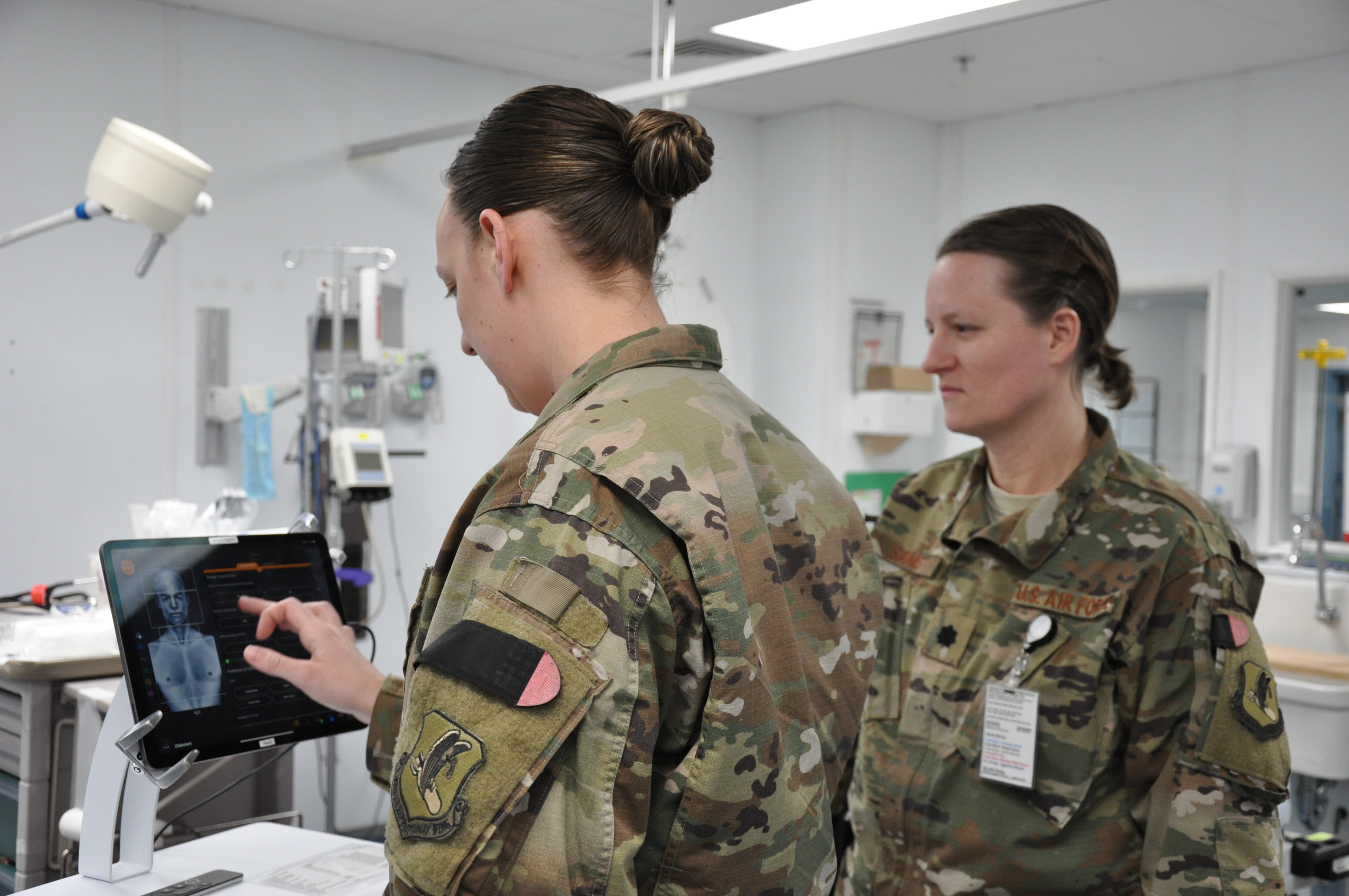Doctors and nurses are going paperless at the most capable Role III trauma hospital in Afghanistan.
Craig Joint Theater Hospital at Bagram Airfield is trying out the T6 Health System mobile device — a high resolution, digital documentation system — to improve trauma care.
The device is a multi-dimensional data and point-of-care analytics system that opens up the possibility of precision and predictive trauma care to theater. But first, hospital staff need to explore whether it’s feasible to use this technology in routine care of trauma patients, mass casualty situations, point of injury and en-route care.
As it stands, hospitals use a more archaic pen and paper system — the same one used at stateside hospitals, according to Air Force Lt. Col. Valerie Sams, a trauma medical director and surgeon with Task Force Medical-Afghanistan.
In trauma cases, a five-page paper form is used to document patient care and is hand written by healthcare teams.
“Unfortunately, there are many flaws in today’s healthcare environment with a pen and paper system of documentation,” Sams said in a news release.
“Much of the paper documentation comes up missing, is not legible, and in theater, many pieces of the patient’s record remain behind in theater, never making it to the central data repository due to the nature of traumatic events under duress in a war zone," she added.
The current system struggles with data capture since much of it relies on handwritten documents and memory. The in-theater trial, which is currently underway, will allow hospital staff at Bagram Airfield to determine the logistical and technical feasibility of the new system.
Air Force Capt. Katie Barnack, an emergency room nurse, said the trial, which began in early March, has been going well.
“The system is user friendly—I like it,” she said. “We’ve already used it on several real traumas. I think it’s more efficient.”

The system ties into a reliable and secure bi-directional data exchange with existing information systems, according to Sams. That will streamline paperwork processes across various hospital staff and functions.
“Patients move through many teams of care, and it can be challenging to get a good picture of exactly what happened from the time of injury to the time of treatment,” Barnack said. “This will help us keep a more complete record and helps us give patients the appropriate care at the appropriate time. We’re also able to capture a lot more data, ensure it’s accurate and get it in their permanent records.”
Craig Joint Theater Hospital has a roughly 99 percent survival rate. Still, advocates for the new trauma system hope it will help improve care and save lives.
“I think there is no better way to connect to the mission than to be here to take care of those who are putting their lives on the line,” Sams said.
Task Force Medical-Afghanistan provides combat medical services and support to U.S. and coalition forces throughout Afghanistan. The group staffs the CJTH and serves as hub for all aeromedical evacuation missions within the Combined Joint Operations Area-Afghanistan.
Casualties in Afghanistan appear to have spiked over the past six months, perforated by several large-casualty events. Last week, a car bomb killed three U.S. troops and wounded three others at an entry control point outside Bagram. There were four other U.S. troop deaths in Afghanistan before that this year.
In November, another IED killed three U.S. special operations troops in Ghazni, wounded three others and a fourth died of his wounds roughly a week later.
More than 20 troops have been wounded in Afghanistan so far this year, according to the Defense Casualty Analysis System. More than 100 were wounded in 2018.
Kyle Rempfer was an editor and reporter who has covered combat operations, criminal cases, foreign military assistance and training accidents. Before entering journalism, Kyle served in U.S. Air Force Special Tactics and deployed in 2014 to Paktika Province, Afghanistan, and Baghdad, Iraq.





